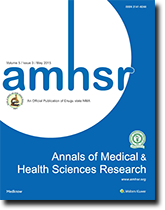

Background: Emergency obstetric hysterectomy (EOH) is a life-saving procedure which is often performed to treat some obstetric complications, as a last resort, to prevent maternal mortality. Objectives: This study was designed to determine the rate, indications, and complications of the EOH procedure at Usmanu Danfodito University Teaching Hospital (UDUTH), Sokoto. Materials and Methods: This retrospective study involved all the patients who had EOH at UDUTH, Sokoto, Nigeria, between January 2005 and December 2010. The case records of these patients were retrieved from the medical record library and information relating to age, parity, booking status, indications, type of hysterectomy, cadre of the surgeon, type of anesthesia, and complications of the procedure were extracted. The data were processed via SPSS version 11.5 and the c2 test was used to analyze some of the results with the confidence limit set at 95%. Results: During the 6-year period, 83 EOH were performed out of 16,249 deliveries giving the rate of the former as 0.51%, i.e. 1 in 196 deliveries. However, the case records of only 74 patients (82.9%) were available for the study. The rate of EOH increased with advancing maternal age and increasing parity. The majority of the patients (89.2%) were unbooked for antenatal care, and the rate of the procedure among these patients (1.82%) was significantly higher than 0.07% observed amongst booked subjects (P<0.001). The main indication for the procedure was ruptured uterus (93.2%) and the majority of the patients (95.9%) had subtotal hysterectomy. Anemia (66.2%), excessive hemorrhage (35.5%), septicemia (18.9%), and wound infection (16.2%) were the leading complications. Excessive hemorrhage was significantly higher in the procedure performed by the senior registrars (51.2%) compared to those undertaken by consultants (16.2%); P=0.03. The case fatality rate of the EOH procedure was 12.1%. However, the case fatality rates in the procedure performed by consultants and senior registrars were 6.5% and 16.3%, respectively. Conclusion: The rate of EOH in the centre is relatively high and ruptured uterus is responsible for the majority of the procedure. Prevention of prolonged obstructed labor, and therefore uterine rupture, through antenatal care and supervision of labor will reduce the rate of EOH whereas performance of the procedure by the most experienced surgeon will minimize the maternal morbidity and mortality.
Select your language of interest to view the total content in your interested language
Annals of Medical and Health Sciences Research received 24805 citations as per google scholar report
 The Annals of Medical and Health Sciences Research is a monthly multidisciplinary medical journal.
The Annals of Medical and Health Sciences Research is a monthly multidisciplinary medical journal.